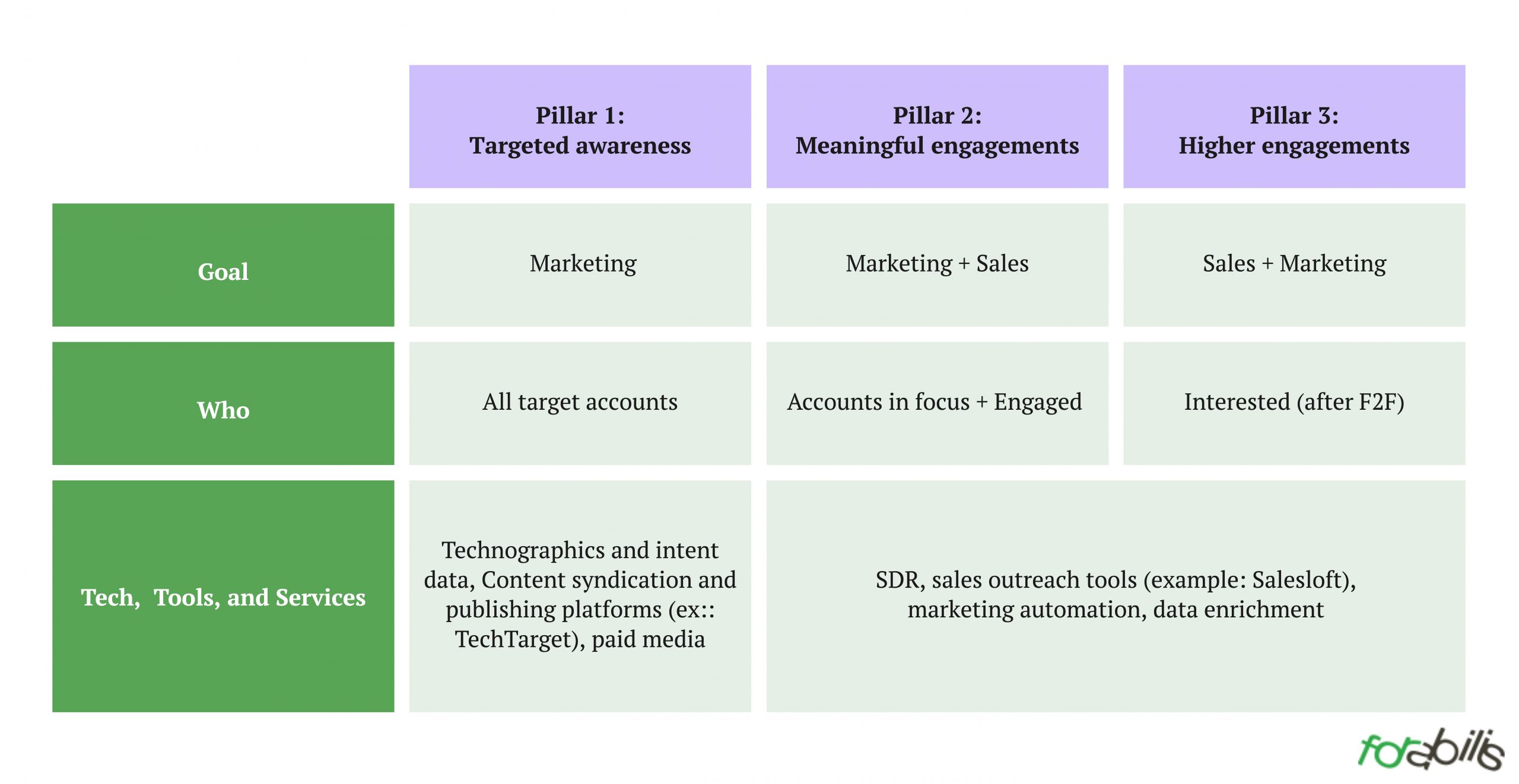How We Use ABM to Target Competitors’ Customers [2 – Tech and Tools]

This is a series about a recent ABM challenge and campaign we had with a client. If you just landed here, I recommend you start with Part 1 where I explain the challenge, the ABM Framework and the process plan.
Building The ABM Target Account List and Tech Stack
Building the target account list is one of the most important foundations of a successful ABM campaign. There are different ways to achieve this. Using your CRM or popular data providers are the most common. In our project, since we were targeting customers of competing solutions, this was not enough. Our client’s CRM could not be the main source of target accounts as, while they may have accounts that overlap, it would not provide a comprehensive source of the customers of competitors.
We also found that the most common data providers rarely had what we needed: In-depth technographics data. Technographics data is the analysis of the technology stack a company uses, and in our case, we were looking for Threat Identification and Access Management solutions. We had to check various data providers before we found one that had the data we were looking for. One last comment regarding using intent data to build account lists — yes, intent data is super important and there are some very good data providers for intent data (Bambora, to name one), but in our case this was not necessary since we were dealing with accounts that had a competing solution, and that was more than enough to establish intent.
Pro Tip: For targeting competing solutions, first identify a list of 5-6 competitors, and then start testing different technographics data providers. You should aim to have at least 800 accounts to target, with at least 2-3 roles in each account.
ABM Setup: How we Chose Our Tech Stack, Platforms and Tools
Each pillar requires different tools and services. Pillar 1 requires technographic and intent data tools for list building and accounts prioritization, paid media, and content syndication platforms (for target accounts outreach). Pillar 2 and 3 require data providers for leads enrichment, marketing automation, and SDR service (which, in some cases, have their own tools).

There are some highly advanced tools that will handle an ABM campaign end-to-end. Demandbase is one such solution, but after looking into it, we felt it is geared towards long-term campaigns and, hence, requires a high level of commitment and the need to rely on their paid media capabilities. So, it’s not right for every ABM campaign. In our case, as it was this company’s first ABM campaign, we decided it was too early to commit to.
We put lots of effort into finding the right technographic tools. Some solutions are able to provide insights only for major products and technologies of known brands like Salesforce, Microsoft and others. They fail when it comes to less common technologies — which are the majority. You should check and test each tool you’re considering, if the products and technologies you’re looking for are actually covered.
In our search to build the right tech stack, we found that some ABM platforms have a minimum ad-budget spend, which was too high for us and not needed in this campaign. Instead, we invested our budget in content syndication, where we believed we would get more and quicker exposure.
Pro Tip: In a campaign targeting competitors, make sure you check where your competitors spend their marketing budget — there are many tools that provide this kind of data. You should consider a similar approach to their channels to attract the same customers.
Interested in learning how we manage, qualify and monitor accounts? Stay tuned for Part 3